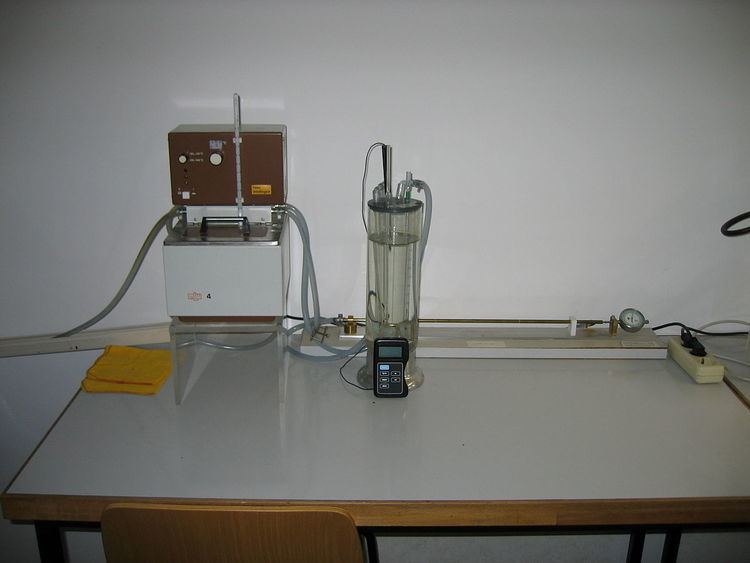 | ||
A dilatometer is a scientific instrument that measures volume changes caused by a physical or chemical process. A familiar application of a dilatometer is the mercury-in-glass thermometer, in which the change in volume of the liquid column is read from a graduated scale. Because mercury has a fairly constant rate of expansion over ambient temperature ranges, the volume changes are directly related to temperature.
Contents
Applications
Dilatometers have been used in the fabrication of metallic alloys, compressed and sintered refractory compounds, glasses, ceramic products, composite materials, and plastics.
Dilatometry is also used to monitor the progress of chemical reactions, particularly those displaying a substantial molar volume change (e.g., polymerisation). A specific example is the rate of phase changes.
Another common application of a dilatometer is the measurement of thermal expansion. The thermal expansivity is defined as:
and is an important engineering parameter.
Types
There are a number of dilatometer types:
For simpler measurements in a temperature range from 0 to 100 °C, where water is heated up and flow or over the sample. If linear coefficients of expansion of a metal is to be measured, hot water will run through a pipe made from the metal. The pipe warms up to the temperature of the water and the relative expansion can be determined as a function of the water temperature.
For the measurement of the volumetric expansion of liquids one takes a large glass container filled with water. In an expansion tank (glass container with an accurate volume scale) with the sample liquid. If one heats the water up, the sample liquid expands and the volume changes is read. However the expansion of the sample container must also be taken into consideration.
The expansion and retraction coefficient of gases cannot be measured using dilatometer, since the pressure plays a role here. For such measurements a gas thermometer is more suitable.
Dilatometers often include a mechanism for controlling temperature. This may be a furnace for measurements at elevated temperatures (temperatures to 2000 °C), or a cryostat for measurements at temperatures below room temperature. Metallurgical applications often involve sophisticated temperature controls capable of applying precise temperature-time profiles for heating and quenching the sample.
